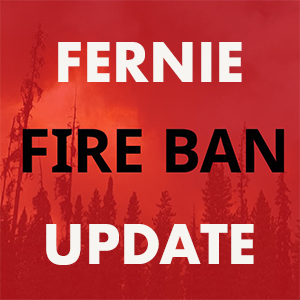
Just over a century ago the Elk Valley was #KtunaxaHomelands, Fernie was a pristine wilderness. The region remained relatively untouched until the exploration of the Crowsnest Pass in 1873 by Michael Phillips. This discovery, and the sighting of outcroppings of coal, opened the region to the rest of the continent.
Fernie takes its name from William Fernie, who along with Colonel James Baker were the main players in the drive to bring coal mining to the valley. It took ten years to raise enough money to build the mines and the railway needed to transport the coal to market. In 1897 coal mining began in the region and in 1898 the Canadian Pacific Railroad arrived, and with it, the town of Fernie. As Fernie grew, logging quickly became the second largest industry in the area with logging camps employing hundreds of men.
Although Fernie’s is a short history, it is one plagued by natural and human disasters. Mining accidents ravaged the region from Fernie to the eastern entrance of the Crowsnest Pass in the early days of mining, claiming numerous lives. Fire reduced Fernie’s primarily wooden commercial district to smoldering rubble in April 1904. In August 1908 a second devastating fire gutted the entire city. The townsfolk literally ran for their lives and in less than 90 minutes the town was reduced to ashes.
The residents were undeterred and by 1910 Fernie was rebuilt: this time in brick and stone. The population soared to 6,000 and Fernie flourished into a thriving city, guided by the unwavering resolve and determination of its residents. These fires, more than any other, shaped the physical appearance of Fernie to this day as is seen in the brick and stone buildings that beautify downtown Fernie.
Although discounted by many, the misfortune of the region is often reason enough to believe. It makes for a fascinating tale, especially considering the many tragedies in Fernie’s past. In 1964 members of the Kootenay Tribes assembled in Fernie and performed a curse lifting ceremony, smoking a pipe of peace with local politicians. Still the legend lives on in the shadow on the mountain and in the stories of the townspeople.
Fernie’s troubled history continued on into the depression of the thirties, when the city was brought to its knees and population and prosperity were reduced. Government subsidies kept the stagnant coal industry alive until the 1960s when it was revitalized by world coal markets. Today coal remains a pillar of Fernie’s economy.
In 1963 locally owned Fernie Snow Valley opened, laying the foundation for today’s resort by cutting runs, building lifts and creating the resort’s first on-mountain subdivision. Fueled by enthusiastic residents, Fernie bid for the 1968 Winter Olympics as the region took its first steps in becoming a world-class resort. In 1998 the resort was purchased and was renamed Fernie Alpine Resort. The ski area has doubled with the construction of new lifts and building began on the alpine village at the base of the resort.
























